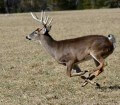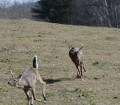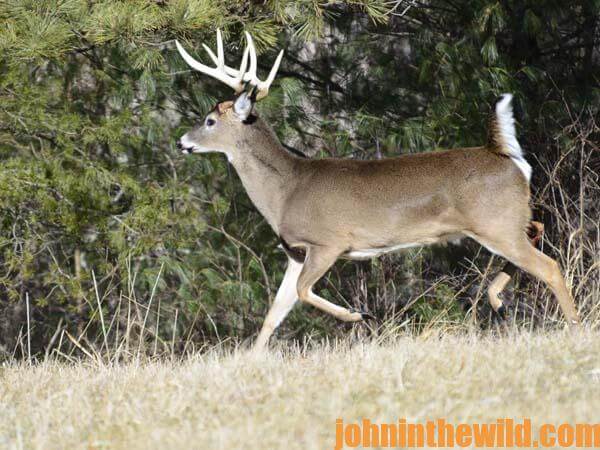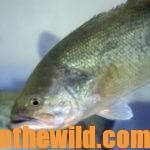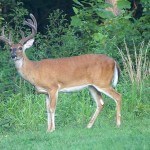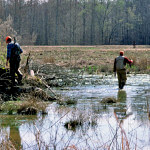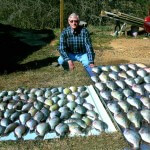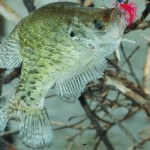John’s Note: Longtime, avid deer hunters Chris Yeoman, a guide, and Dr. Jim Nelson – both of Rapid City, South Dakota, enjoy shooting deer on the run and think nothing of making several hundred yard shots at running deer.
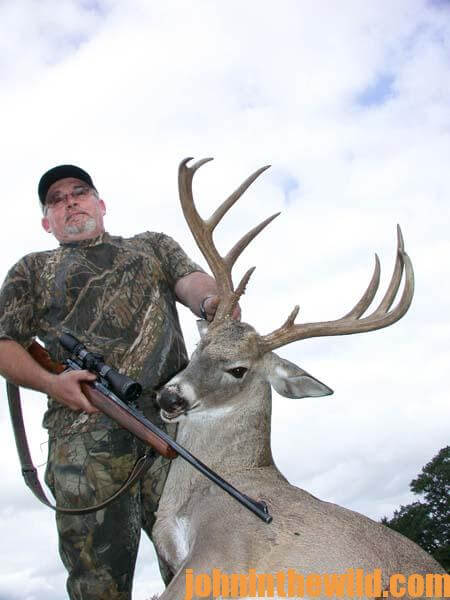 Another factor that determines your aiming point when you’re trying to take a buck that’s running away from you is whether he’s running uphill or downhill. “If the deer runs uphill, you increase the lead past his nose,” Nelson emphasizes. “You have to aim a little more in front of him than if he’s running downhill. If the deer’s running downhill, then you may not have to increase the lead at all, because the deer will run down into the bullet. One of the problems associated with trying to teach someone to accurately take deer on the run is that your system of aiming has to become instinctive. From shooting hundreds of coyotes over many years, you learn how to vary your lead depending on the grade the animal is going up or down. The steeper the grade, the more you may have to change your lead from when a deer is running on flat ground straight away from you. At lesser grades, your lead will change less.
Another factor that determines your aiming point when you’re trying to take a buck that’s running away from you is whether he’s running uphill or downhill. “If the deer runs uphill, you increase the lead past his nose,” Nelson emphasizes. “You have to aim a little more in front of him than if he’s running downhill. If the deer’s running downhill, then you may not have to increase the lead at all, because the deer will run down into the bullet. One of the problems associated with trying to teach someone to accurately take deer on the run is that your system of aiming has to become instinctive. From shooting hundreds of coyotes over many years, you learn how to vary your lead depending on the grade the animal is going up or down. The steeper the grade, the more you may have to change your lead from when a deer is running on flat ground straight away from you. At lesser grades, your lead will change less.
“This problem is the same one hunters have shooting ducks or geese. To be accurate, they must calculate in their minds where the bird will be when the shot arrives. Because rifles shoot at such great speeds, we often tend to forget that even at the speed the bullet’s traveling, the bullet can’t land where you’re aiming when the animal’s moving away from you. By the time the bullet arrives where the deer was when you squeezed the trigger, the deer has left that spot. Most hunters miss running deer because they don’t lead them enough.”
Of the deer Nelson has mounted on his walls, about half were bagged on the run. Nelson and Yeoman also take so many trophy bucks because they study the terrain. They look for small pockets where big bucks hide out, and they drive those pockets to flush the deer from cover. When a trophy comes out into the open, he’s usually moving quickly and rarely will stop. To take this buck, you must shoot quickly and accurately.
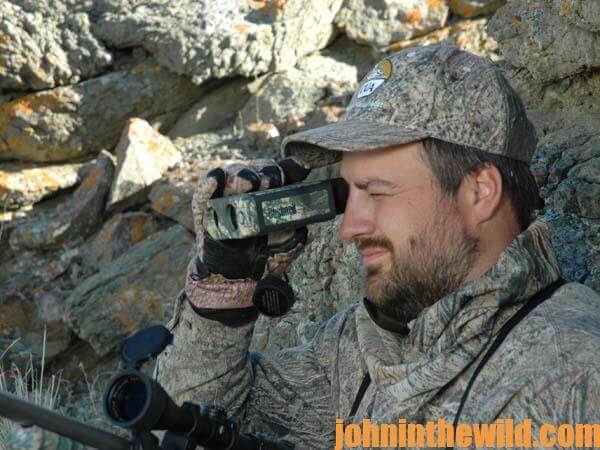 What Guns, Bullets and Scopes Are Best:
What Guns, Bullets and Scopes Are Best:
Besides gaining experience by shooting coyotes at long distances, both Yeoman and Nelson believe their combinations of rifles, scopes and bullets are critical to their success. The rifles Yeoman and Nelson recommend for this kind of shooting are those that push the bullet out at velocities over 3,000-feet/second.
“The .25-06, .270, and .300 Win. Mag. are my favorite calibers,” Yeoman explains. “Each caliber has its favorite bullet, which is determined by the bullet’s length and ballistic coefficient — the ease at which the bullet goes through the air. In the .25-06, the 100-grain bullet seems best. Jim prefers the factory-loaded Hornady 100-grain bullet. In the .300 Win. Mag, I shoot the 180-grain bullet.”
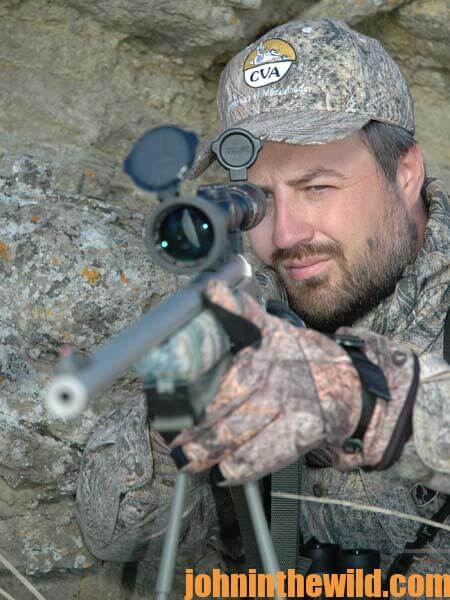 Yeoman likes either a Nosler partition or a Barnes-X bullet. “Both of these bullets are excellent big game bullets with tremendous knock-down power. I like to shoot the solid-copper Barnes-X because of the way the bullet mushrooms into an X-shape. This bullet also has the ability to retain all its weight since only the front portion of the bullet actually mushrooms. This action produces tremendous knockdown power at long distances.”
Yeoman likes either a Nosler partition or a Barnes-X bullet. “Both of these bullets are excellent big game bullets with tremendous knock-down power. I like to shoot the solid-copper Barnes-X because of the way the bullet mushrooms into an X-shape. This bullet also has the ability to retain all its weight since only the front portion of the bullet actually mushrooms. This action produces tremendous knockdown power at long distances.”
The gun’s ability to shoot flat over a long distance and deliver a bullet that can bring a running deer down quickly is why Nelson shoots a .25-06, and Yeoman likes the .300 Win. Both of these calibers are efficient at taking moving game at great distances.
To get John E. Phillips’ Kindle eBooks and print books on hunting deer, “How to Hunt and Take Big Buck Deer on Small Properties,” “How to Hunt Deer Up Close: With Bows, Rifles, Muzzleloaders and Crossbows,” “PhD Whitetails: How to Hunt and Take the Smartest Deer on Any Property,” “How to Take Monster Bucks,” “How to Hunt Deer Like a Pro,” and “Bowhunting Deer: Mossy Oak Pros Know Bucks and Bows,” or to prepare venison, “Deer & Fixings,” click here.
For information on making jerky from your deer to provide a protein-rich snack, you can download a free book from https://johninthewild.com/free-books.

